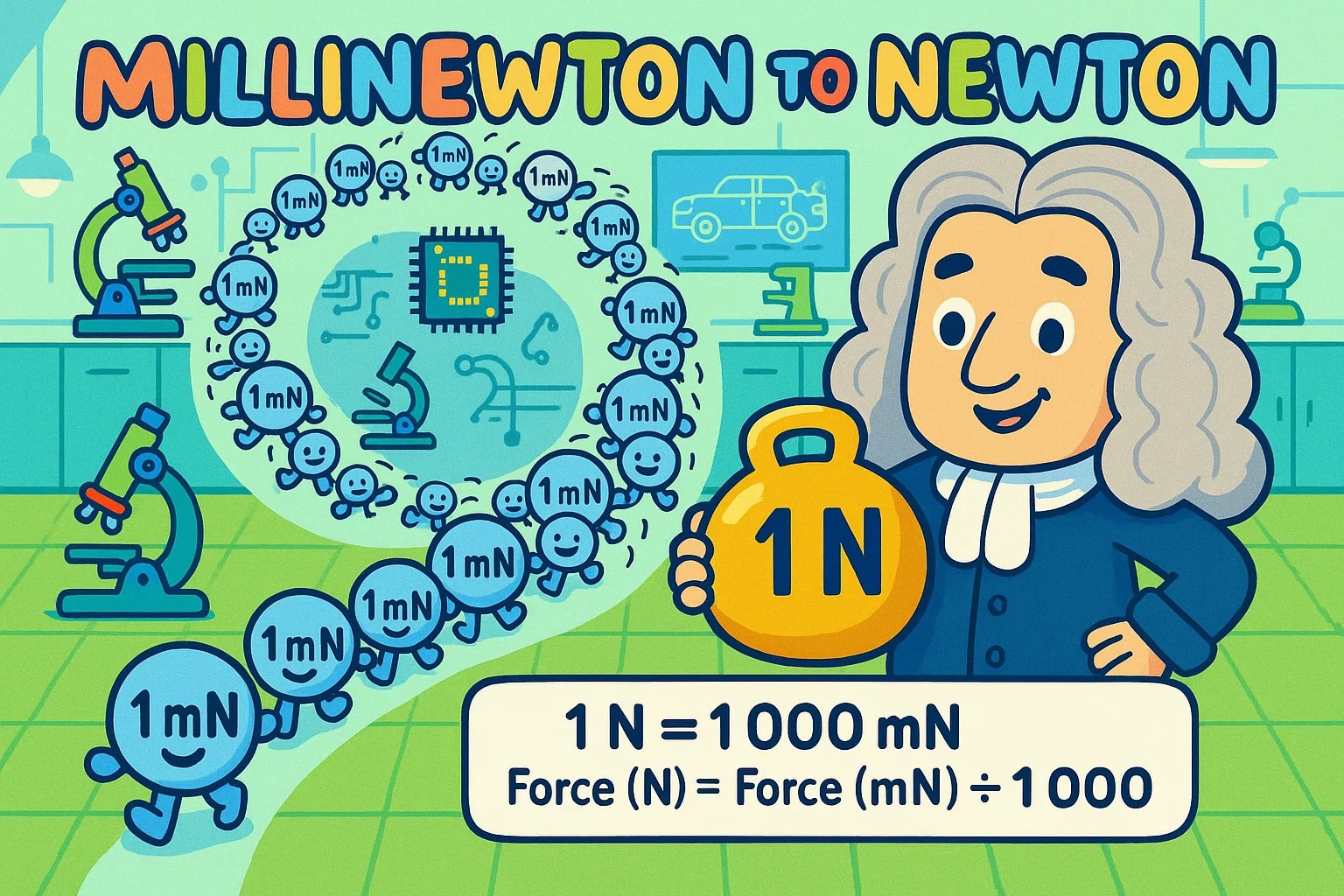Millinewton to Newton – How to convert mN to N
The millinewton and newton measure the same quantity — force — but they operate on very different scales. Converting between them is simple, but knowing when to use each can make data reporting and analysis far cleaner. Here’s how the units work, how to switch between them, and where each one matters in the real world.

The millinewton (mN): for microscopic measurements
A millinewton is one-thousandth of a newton, written as 1 mN = 0.001 N. The prefix “milli-” means 1/1000, making the unit perfect for very small forces — those too delicate for a whole newton to describe clearly.
Millinewtons are common in fields like microelectronics, biomedical research, and materials testing. For example, scientists measuring the adhesion force of a single hair or the sensitivity of a touchscreen use mN readings to avoid awkward figures like 0.004 N.
The newton (N): the standard reference
The newton is the SI unit of force, defined as the force required to accelerate 1 kg by 1 m/s². It’s the standard for everything from classroom physics experiments to structural engineering.
While one newton is easy to visualize — about the force needed to hold up a 100 g object against gravity — large systems can accumulate thousands or millions of newtons, and smaller systems drop to fractions of a newton. That’s where units like the millinewton step in.
How to convert mN to N
The conversion is straightforward:
1 N = 1 000 mN
Force (N) = Force (mN) ÷ 1 000
Example:
A lab instrument detects a pulling force of 450 mN. To express it in newtons:
450 mN ÷ 1 000 = 0.45 N.
So, 450 mN = 0.45 N.
For more unit options, explore Jetcalculator’s Force Converter or the all-in-one Conversion tools.
Did you know?
-
One millinewton corresponds to the weight force of roughly 0.1 g under Earth’s gravity — about the mass of a grain of rice.
-
Millinewtons are essential in atomic force microscopy, where researchers measure forces as tiny as 1–100 mN when studying nanoscale materials.
-
Many medical device tests — such as checking catheter flexibility — record bending forces in the 10–500 mN range.
-
A butterfly in flight produces wing forces on the order of 100–300 mN, which biologists measure to understand aerodynamics in nature.
-
The smallest changes in smartphone touchscreen sensors can be detected in fractions of a newton, often as low as 5 mN.
Where these scales meet: from nanolabs to engineering
Though the millinewton and newton share the same base definition, they live in very different worlds. In microengineering labs, forces in the tens of millinewtons can determine whether a sensor works correctly. At the same time, engineers building vehicles or machines translate those tiny figures into newtons when integrating data into broader models or reports.
Converting between them bridges the gap — making it possible to merge fine-scale test results with large-scale design calculations without drowning in decimals.

Making measurements readable
Switching from millinewton to newton isn’t just about converting numbers; it’s about making results clear and usable. Small-scale experiments are easier to document in mN, while broader engineering work benefits from standardized newtons.
To keep your results precise and easy to read, use Jetcalculator’s Conversion tools or the dedicated Force Converter whenever you need to switch between these force units. Whether you’re tracking the lift of a butterfly wing or the stress on a machine part, converting mN to N keeps your work consistent and practical.

